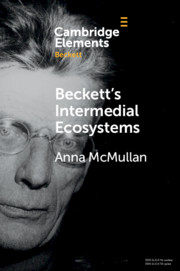Element contents
Beckett's Intermedial Ecosystems
Published online by Cambridge University Press: 21 January 2021
Summary
- Type
- Element
- Information
- Series: Elements in Beckett StudiesOnline ISBN: 9781108938990Publisher: Cambridge University PressPrint publication: 18 February 2021
Bibliography
Bibliography
- 18
- Cited by

